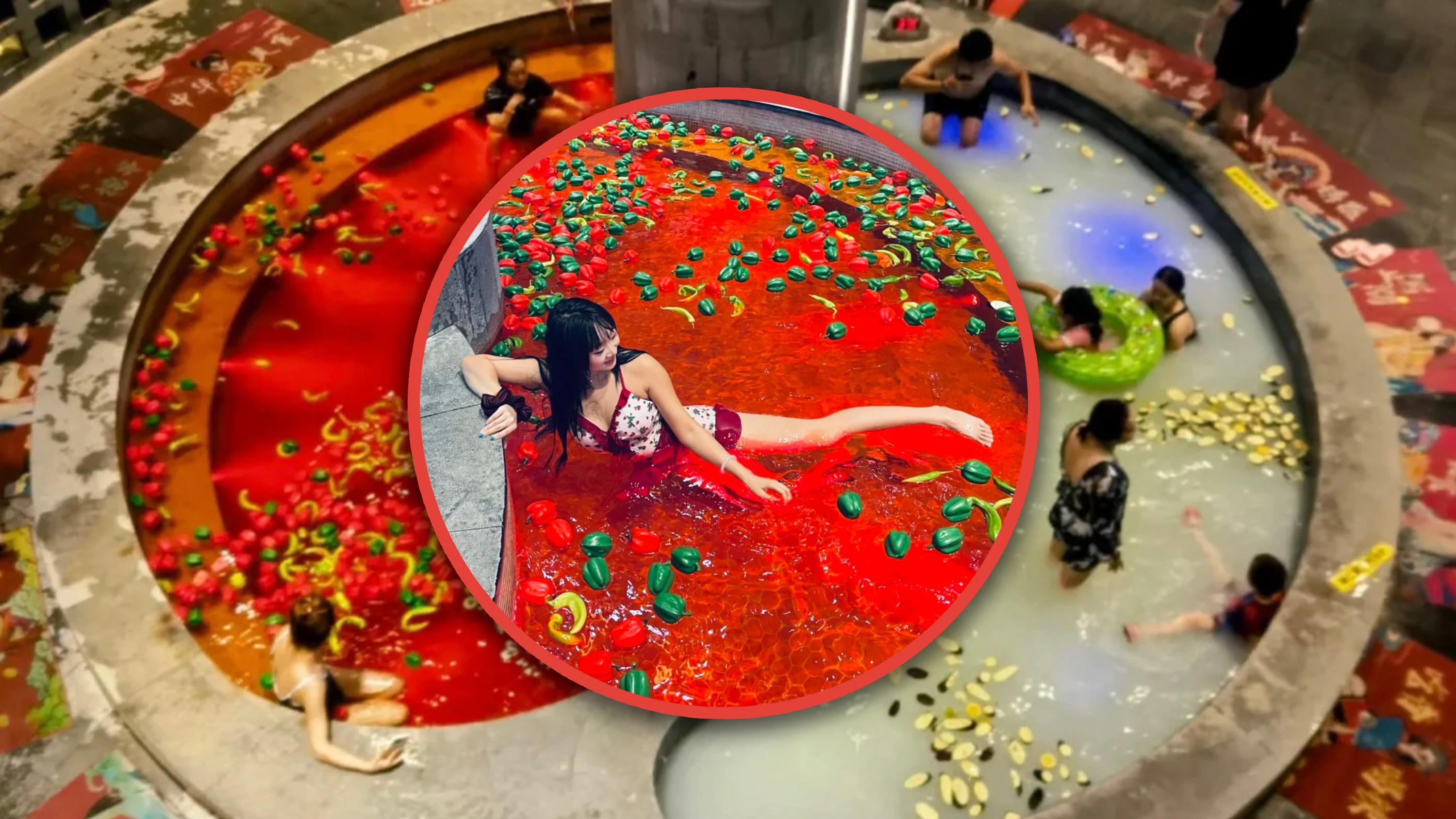Copyright scmp

Some bathhouses in China are invigorating the traditional hot spring experience with “hotpot baths”, where visitors immerse themselves in a chilli pepper “soup” inspired by the principles of traditional Chinese medicine (TCM). In October, a resort in Harbin, the capital of Heilongjiang, China’s northernmost province, elevated the experience further by introducing a two-tone soup pool, offering a more visually stunning attraction. In restaurants, the yuan yang hotpot, or Mandarin duck hotpot, features a divided pot that accommodates two contrasting broths, providing a favoured choice among diners. According to mainland media outlet Daxiang News, in this picturesque area, a 5-metre-wide round hot spring is segmented into vibrant red and white zones, closely resembling the popular two-sided hotpot utensil. The red pool is brimming with chilli peppers, eggplants and cabbage, replicating a spicy broth, while the white pool contains milk, red dates and goji berries, akin to a clear soup. In an interview, a staff member clarified that the red hue of the soup pool originates from rose petals, which are refreshed daily. “The chilli peppers used are a milder variety, promoting metabolism and enhancing blood circulation, while the milk helps to moisturise the skin,” they explained. Official information indicates that an adult ticket to the scenic area costs around 160 yuan (US$23), which includes access to the hotpot bath, a sauna experience and a buffet meal. There are no time limits or age restrictions for the bath, though a soaking duration of 15 to 20 minutes is recommended. The ingredients within the pools are not for consumption, and the hotpot bath is not advisable for individuals with cardiovascular conditions, skin issues or allergies. Visitors have shared their experiences on a mainland food-sharing app, Meituan, noting that the resort also provides complimentary fruit and tea brewed with Chinese medicinal herbs. One user remarked: “The yuan yang hotpot bath was such a delightful experience! The water temperature was just right, and the steam was incredibly soothing.” Resort staff emphasised that the yuan yang hotpot bath is a contemporary interpretation of TCM’s medicated bath therapies. With a history spanning thousands of years, medicated baths utilise steam or herbal infusions from boiled Chinese herbs to soak the body, believed to aid in illness prevention. Common ingredients include ginger, mint and mugwort. Although the benefits of chilli peppers and milk in the bath are not scientifically validated, traditional beliefs suggest that chilli peppers dispel cold, while consuming milk is thought to soothe the mind and promote sleep. After the yuan yang hotpot bath gained popularity on mainland social media, reactions from netizens have been mixed. One observer criticised it as a “waste of food” and proposed the use of fake ingredients for visual appeal. Conversely, another praised it, stating: “Hotpot holds a cherished place in Chinese culture. This business is truly inventive.” According to Xinhua News, citing Red Restaurant Big Data, the Chinese hotpot market reached 617.5 billion yuan (US$87 billion) last year.



